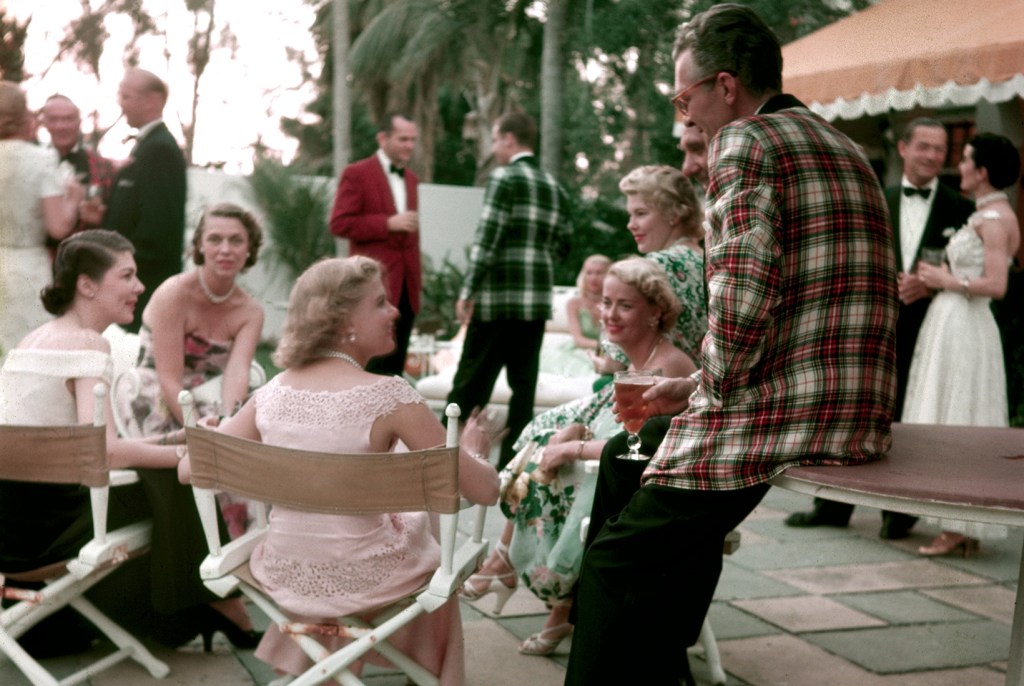For my 13th birthday in 1995 I requested — and got — my own ‘line’. This meant that I could jabber all night without taking the phone out of service for everyone else. Getting your own line was a rite of passage for teenage girls in America back then, and everybody just sighed and let us get on with it. Talking on the phone all the time was simply something girls did. Women, meanwhile, at least according to film and TV, spent their time sitting by the phone eagerly awaiting calls from men that usually didn’t come.
But then the feminized world of the endless, open-ended voice call dwindled with the arrival of mobile phones and a preference for texting, messaging, tweet-messaging, and the easy WhatsApp voice note. And as phones began to come with us everywhere, we began answering them less. Millennials’ terror about picking up is well documented.
All of which makes the stratospheric success of Clubhouse rather odd. Clubhouse is a social media sensation that essentially lets people have, and listen in on, public phone calls, known as ‘rooms’ — and it’s just as popular with boys. It was launched in March last year by Silicon Valley entrepreneurs Paul Davison and Rohan Seth, hit the big time last month after Elon Musk hosted a phone-in, and is now valued at $1 billion with an exponentially growing userbase of about 10 million. It is only accessible to iPhone users (so far), thereby excluding vast swathes of the world, and requires an ‘invite’ to join. It’s not hard to get an invite, but this faux–exclusivity seems to be working. Once in, Clubhouse users chase followers, and, as usual, there’s a pot of gold — power and renown — at the end of the rainbow. It’s not easy to get a following on Clubhouse. I dipped into a discussion about the UK Budget last week with Tom Tugendhat, MP and chair of the UK Foreign Affairs Committee, and Andrew Griffith MP, and the audience was just 53, far fewer than they’d get on a podcast, at a talk, or on TV. At the time of writing, I have 15 followers.
The rage for post-radio audio isn’t new. Podcasts — the reigning audio form today in the Anglosphere — emerged from an age obsessed with curation and shaped by an on-demand sensibility. But the sudden appetite for talk is new. And not cutely produced talk; just talk, dressed up as an event that lands on fellow Clubhousers’ calendars. Talk that is promoted, with queasy circularity, on Twitter or LinkedIn. In essence, Clubhouse encourages chancers to yodel into the ravine and see what comes back. Speakers form panels or can just go it alone and start jawing on the spot, hoping a crowd will gather. Clicking on a room allows you into it (your profile pic will be visible), and then you can intervene by pressing a ‘raise your hand’ button. Whether you are ‘invited up to the stage’ to say your piece depends on the moderator. Nonetheless, there has been much excitement about the democratic possibilities of Clubhouse: ‘I can ask a question to Elon Musk directly!’ a friend raved.
A telling comment. At last count I found 11 Elon Musk profiles on Clubhouse. My garbled homescreen, a daunting update on the computer bulletin boards of the 1980s, suggests a long list of ‘people to follow’, the vast majority of whom describe themselves as ‘co-founders’ and experts in ‘building’ things — brands, ‘billion dollar startups’ and ‘products’. Dollar signs and laptops are frequent emojis in Clubhouse profiles. Among the topics I am invited to ‘find conversations about’ are ‘Hustle’ (entrepreneurship, TikTok, Clubhouse, Small Business), ‘Hanging Out’ (Chill Vibes, Welcome Newbies, Late Night) and ‘Tech’ (Crypto, DTC, VR/AR, Engineering). One can find the great and the good from politics, academia and the art world on here too, but they don’t really belong — yet. Their habitat is still Twitter and YouTube, podcasts and print, but that seems set to change, and fast.
My own invite came from a 26-year-old, someone too young to remember the golden age of the telephone or the talk show. To him Clubhouse is dazzling and new, the apotheosis of a social media dream of total connectedness and endless expression. He told me he had been staying up until 5 a.m. every morning to listen in on this unending phone line — the previous evening had been taken up eavesdropping on ‘mostly high people talking about [disgraced rapper] R. Kelly’ and whether ‘they’re allowed to play his music again’. But it’s hard to see where these conversations can go, or are supposed to go, apart from towards the creation of yet another brutal, exhausting hierarchy, with a small cream of stars at the top, and more catfights. Twitter, but with actual screaming. This has already begun to happen: a room created to discuss ‘wokeism’ recently ended up as a bloody inquisition against the intellectual dark web star and evolutionary biologist Bret Weinstein, who, after being spotted in the audience, was hauled on to the virtual stage and interrogated: ‘Are you anti-racist? Are you transphobic? Are you anti-black? Give us the answers now.’
In the end, though, the real horror of Clubhouse is its crystalline embodiment of the infinite content principal. The logic of the digital world seems to be that there should be ever more room for video, photos, ‘stories’, caustic comments, and now talk — from anyone with an iPhone. Surfing around Clubhouse, even dipping into conversations on interesting topics by esteemed people, I was left with only one question: why am I here? Unstructured opining, or yelling, is one thing at the dinner table, but this ferocious new appetite for it from perfect strangers is hard to understand. Maybe, after a decade of social media, we simply find it easier to seek the company of strangers and semi-strangers on our phone screens. Why we’d want to listen to them yammering all day and all night is a different question. A year into a lonely pandemic, perhaps Clubhouse’s appeal is more to do with the chance to yammer oneself, in the hope of being heard by someone, somewhere.
This article was originally published in The Spectator’s UK magazine. Subscribe to the US edition here.

























